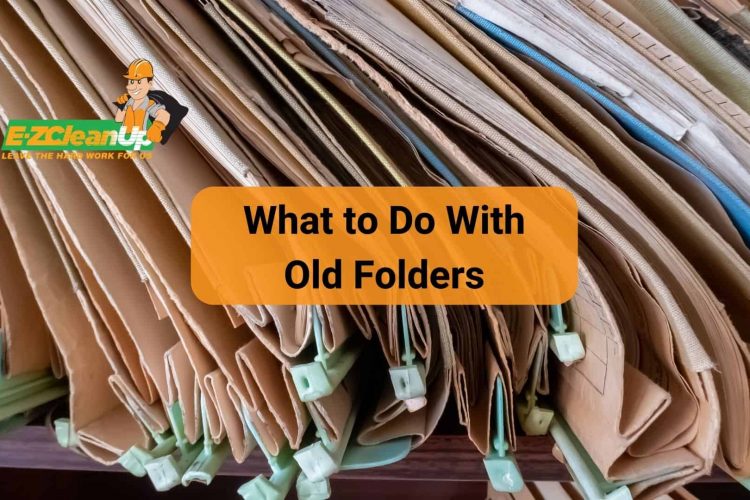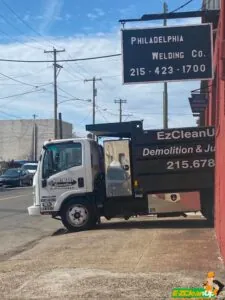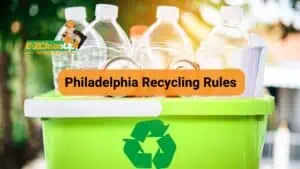Repurpose old folders into creative organizers and craft materials, or donate them to institutions for reuse. This sustainable approach transforms clutter into functional items or helps others.
Explore unique DIY ideas about what to do with old folders in our article below.
Repurposing Strategies for Old Folders
These repurposing ideas are all about seeing the value in what you already have and turning it into something new and functional. They’re a step towards a more sustainable lifestyle and a great way to express your creativity.
Creative Reuse in Home and Office Organization
Here’s how you can give them a new purpose in your home or office:
- Desk Organizer: Create sections in old folders for pens, clips, and other office supplies.
- Wall Organizer: Attach folders to a board for a wall-mounted organizer.
- DIY Calendar: Use the folder’s panels to make a reusable calendar.
- Sorting Bins: Label them for sorting mail or documents.
- Charging Station: Cut slots to hold phones or tablets while charging.
- Recipe Holder: Convert folders into holders for your favorite recipes.
- Art Portfolio: Store and organize kids’ artwork or your own sketches.
- Magazine Rack: Stand them up on a shelf to hold magazines or catalogs.
- File Box: Strengthen them with tape and use as a small file box.
- Craft Supplies Organizer: Sort and store craft materials in labeled folders.
Upcycling Ideas for Crafts and DIY Projects
Get creative with old folders by transforming them into unique crafts and DIY projects:
- Scrapbook Covers: Turn them into decorative covers for homemade scrapbooks.
- Gift Boxes: Fold into small boxes for gifts or trinkets.
- Plant Labels: Cut into strips for labeling plants in your garden.
- Decorative Bunting: Cut into triangles and string together for festive bunting.
- Photo Frames: Create unique frames for your favorite pictures.
- Custom Stencils: Cut out designs for painting or spray-painting projects.
- Bookmark Collection: Design and cut a variety of bookmark shapes.
- Greeting Cards: Use the material to create personalized cards.
- Kids’ Craft Projects: Perfect for school projects or fun at home.
- Jewelry Organizer: Customize with compartments for organizing jewelry.
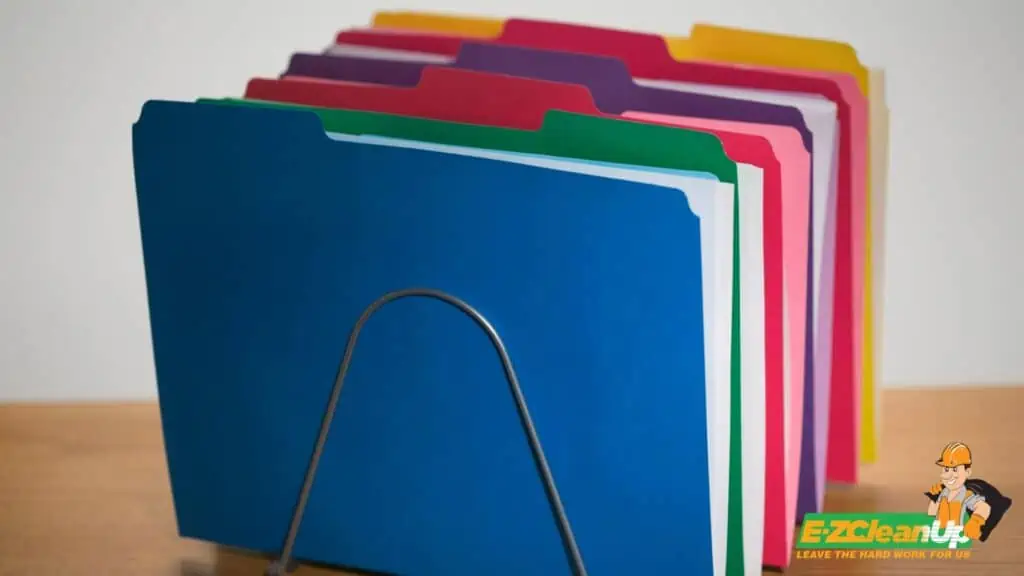
Donation Options: Where and How to Donate Usable Folders
Old folders, often stacked away and forgotten, can find new life through thoughtful donations. When considering donating old folders, the first step is to identify potential recipients.
Various institutions, like museums, libraries, schools, and non-profit organizations, often welcome such donations. Each institution has its own unique collection goals and missions.
For instance, public libraries and museums are more community-oriented, often engaging in public exhibits and events. In contrast, university libraries primarily focus on education and research needs.
The process of donating involves a few key steps:
- It’s essential to provide context to the folders you’re donating, like the contents they might have held or their significance. This helps the receiving institution understand the value of your donation.
- Researching the institution beforehand is crucial. This ensures that your donation aligns with their collection goals and needs.
- Contacting the staff of these institutions can give you more clarity on their specific donation protocols.
When organizing a donation drive in your community, forming a team is vital. This team can handle various tasks, such as meeting with the non-profit organization, promoting the event, organizing and storing items, and managing online donations. Finding a local partner, like a business, can also greatly benefit the drive.
School supply drives are a popular option for community donation drives. They address a vital need, as many parents and schools struggle to provide necessary supplies for students. Such drives can be set up using platforms like Donorbox, allowing for online donations and even peer-to-peer fundraising.
Recycling and Disposal of Old Folders
Adopting eco-friendly practices when disposing of old folders can greatly contribute to reducing environmental impact while managing disposal effectively.
Recycling Paper Folders: Processes and Best Practices
Paper folders are typically made from sturdy paper or cardstock and come with tabs for easy labeling. They come in types like reinforced file folders for added durability and color-codable filing folders for an organized system.
Recycling old paper folders is not just about getting rid of clutter; it’s about responsibility and sustainability.
Here’s how you can do it right.
- Collection and Transportation: Gather waste paper materials from various sources, such as homes, schools, and businesses. This step is crucial, as it sets the stage for the entire recycling journey.
- Sorting: When the paper waste reaches a recycling facility, it undergoes sorting, which determines the quality and type of paper. Contaminated paper (e.g., with grease or food) or shredded paper may not be recyclable due to process issues.
- Shredding and Pulping: The sorted paper is shredded and mixed with water and chemicals to create a slushy pulp. Large contaminants like staples or paper clips are removed during this stage to ensure recycled material quality.
- De-inking and Floatation: Dyes and inks are removed from the pulp to enhance its purity and whiteness. This step is crucial for achieving the desired quality of the recycled paper product.
- Drying: The pulp is dried, and water is removed to form continuous sheets of paper. This final step completes the recycling process, producing high-quality recycled paper products.

When it comes to best practices for recycling paper folders, it’s essential to keep them dry and clean. Ensure that they are free from contaminants like food waste, as this can render the paper non-recyclable. Always check local recycling guidelines to understand what materials are accepted in your area.
Recycling paper offers significant benefits. It helps reduce landfill waste, conserves natural resources, saves energy, cuts costs for businesses, and contributes to a smaller carbon footprint.
For instance, recycling one ton of paper can save 380 gallons of oil and 7,000 gallons of water, which highlights the substantial environmental impact of this simple act.
Proper Disposal of Plastic Folders
Plastic folders are known for their durability, making them ideal for frequent handling and retrieval of documents. These folders come in various styles, including tabbed and pocketed versions, and are available in multiple colors, aiding quick file identification. The longevity of plastic folders makes them a cost-effective option for long-term use, and their sturdiness protects the contents from wear and tear.
Plastic folders are often not straightforward to recycle. This is primarily because they are made from a variety of materials, which might include bioplastics, composite plastics, or plastics with coatings that are incompatible with traditional recycling processes.
For example, plastic-coated wrapping paper and certain types of polycarbonate cannot be recycled in the same way as other plastics.
When it comes to 3-ring binders, which are a common type of plastic folder, the process involves separating different components. The vinyl and chipboard covers need to be cut and removed, and then the ring metals can be separated for recycling. However, the vinyl cover of these binders typically cannot be recycled.
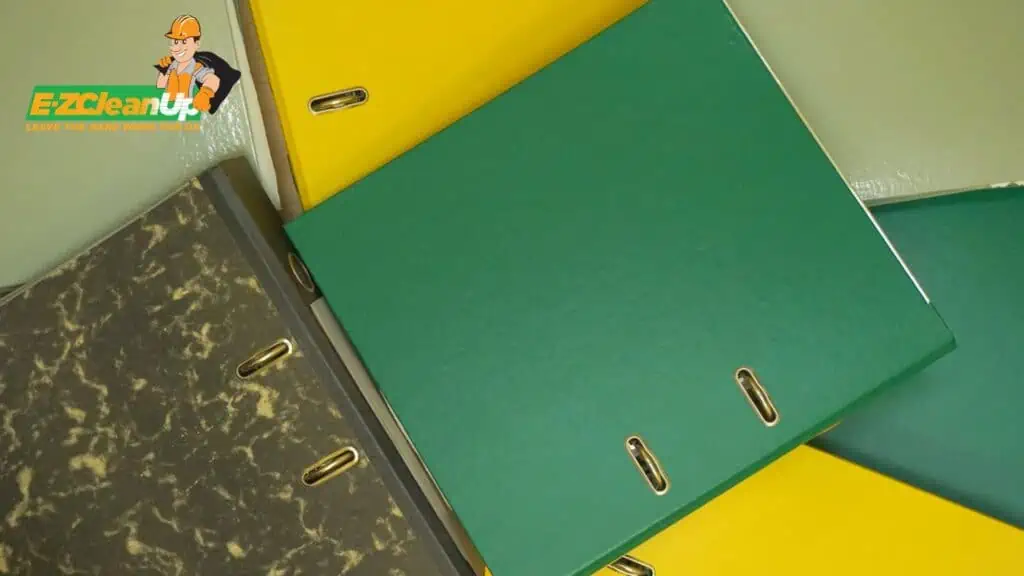
For general plastic folders, the key is to remove any non-plastic components, like metal clips or pins, before recycling. In some cases, glossy or plastic-coated paper that is difficult to tear may not be recyclable and should be discarded.
An important aspect of disposing of plastic folders is understanding the broader environmental impact. Only about 9% of plastic waste is recycled, which highlights a significant gap in our recycling efforts. This makes it crucial to not only recycle where possible but also to reduce the use of non-renewable plastics and seek alternatives.
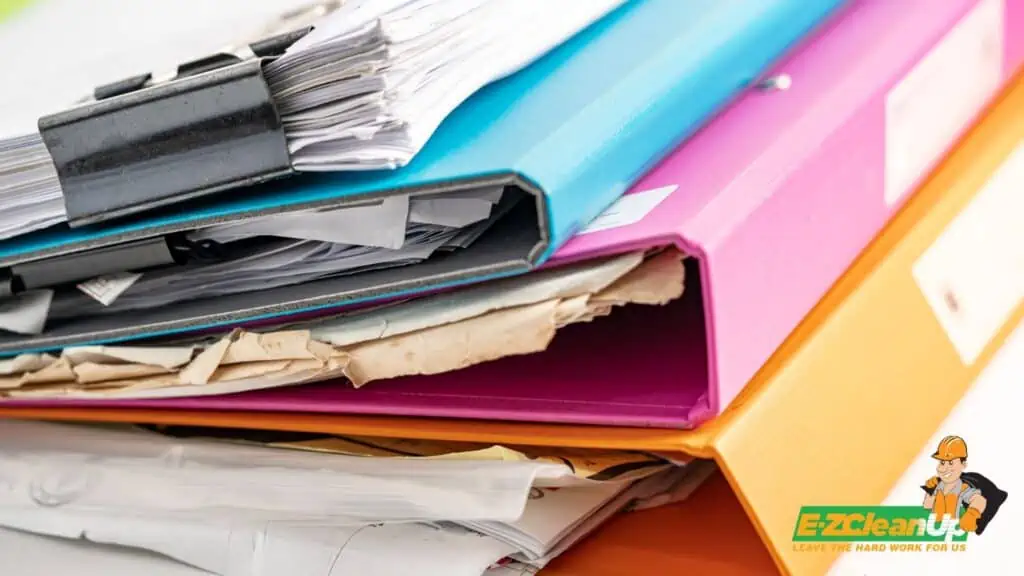
Eco-Friendly Disposal Options for Specialty Folders
Specialty folders cater to specific organizational needs.
- Classification folders have multiple sections, or dividers, within a single folder.
- Expanding folders, also known as accordion folders, are designed for large volumes of documents with expanding sides or compartments.
- Presentation binders, with rings or metal prongs, are commonly used for reports or manuals.
Each type of specialty folder, including pocket portfolios and file jackets, is designed with specific functionality in mind to suit various organizational and presentation needs.
Specialty folders, including plastic and metal-tabbed file folders, have specific disposal and recycling guidelines. It’s essential to approach their disposal with eco-friendly methods to minimize their environmental impact.
For plastic folders, the recycling process can vary based on the material they’re made from. When recycling, it’s important to separate any non-plastic components, such as metal clips or rings, as these materials need different recycling processes.
Regarding 3-ring binders, a common form of specialty folders, the recycling process involves dismantling them. Vinyl or other coverings must be removed, leaving a sturdy cardboard binder that can be recycled.
The metal lever arch panel should be separated and recycled independently if the binder is plastic or plastic-covered.
Paper-based folders, such as manila and colored file folders, are generally recyclable, like standard paper or cardboard. It’s crucial, however, to check with local recycling centers to confirm their acceptance, as processes and capabilities can vary by location.
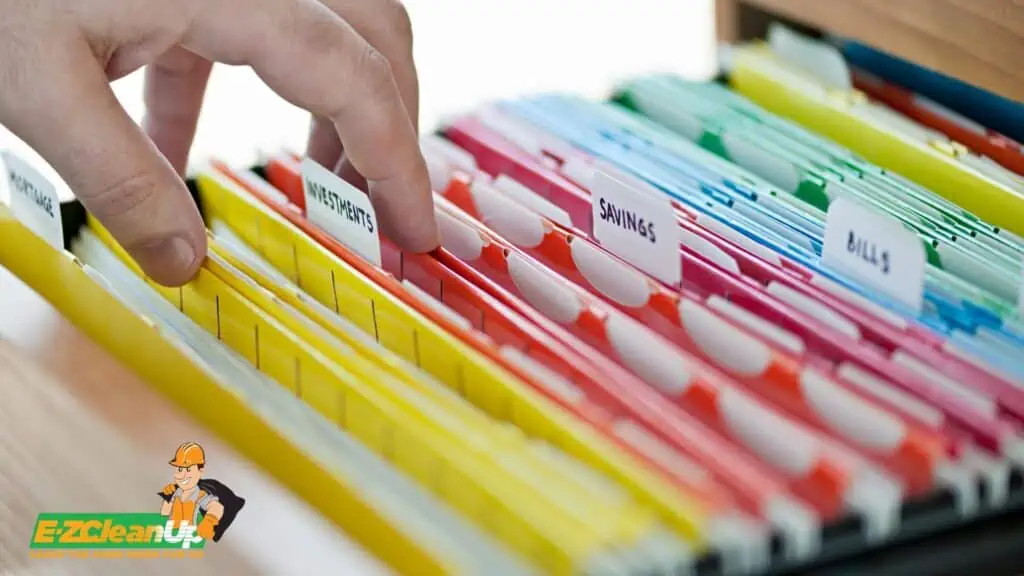
Assessing the Condition of Old Folders
When assessing the reusability of old folders, consider factors such as material durability, flexibility of use, and physical integrity. Durable materials like plastic may have a longer lifespan, while paper folders, despite being prone to wear, can still be reused if they remain intact.
Recognizing Signs of Wear and Damage
Identifying wear and damage is crucial in assessing a folder’s condition. Here’s a list of key indicators:
Normal Wear:
- A slight fading of color
- Minor scuff marks
- Gentle creasing
Damage:
- Torn or missing parts
- Significant stains
- Broken tabs or prongs
- Extensive writing or drawing on the folder
- Excessive dirt or mold
Distinguishing between normal wear and damage is crucial, as it helps determine whether the folder can still be used or if it should be replaced due to more severe issues.
Evaluating the Folder’s Current Functionality
A functional folder should open and close easily, hold papers securely, and fit into a filing system if necessary. For specialty folders like binders or accordion folders, additional features like ring mechanisms or expanding sections should be operational.
If these features are compromised, the folder’s effectiveness in organizing and protecting documents is reduced. Ultimately, if a folder can’t perform its intended function due to wear or damage, it may not be suitable for continued use.
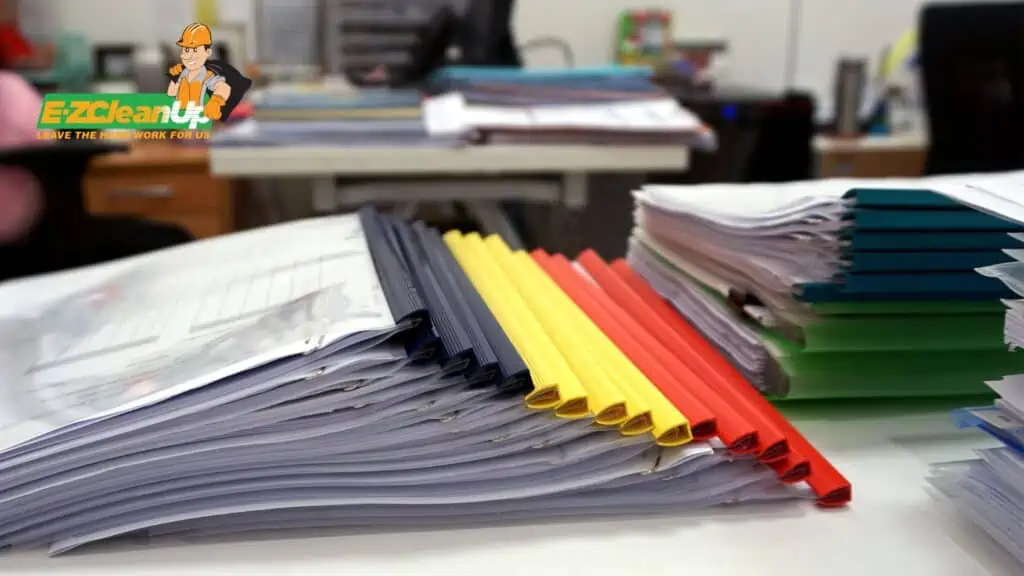
Best Practices for Maintaining and Extending Folder Life
To maintain different types of folders effectively, consider their material and use. For paper folders, gentle handling is key. Keep them away from moisture and direct sunlight to prevent fading and weakening.
Plastic folders benefit from regular cleaning to remove dust and prevent static build-up, which can attract more dust and debris. For specialty folders like binders, check regularly for loose rings or damaged edges and repair them promptly to prevent further wear. In all cases, minimize overstuffing folders to prevent warping or tearing.
Preventing Damage and Wear: Storage and Usage Guidelines
Proper storage and careful usage are essential to extending the life of folders. Store folders in a cool, dry place to avoid moisture damage and fading.
When using archival materials or delicate documents, it’s advisable to use polyester sleeves, which provide protection during storage and handling and reduce the chance of damage from handling.
For folders containing multiple items, maintaining order is crucial. Use subfolders or paper clips (which should only come in contact with the sleeves, not the records inside) to keep documents in sequence. It’s also important to minimize direct handling of fragile documents – consider leaving them in protective sleeves during use and digitization.
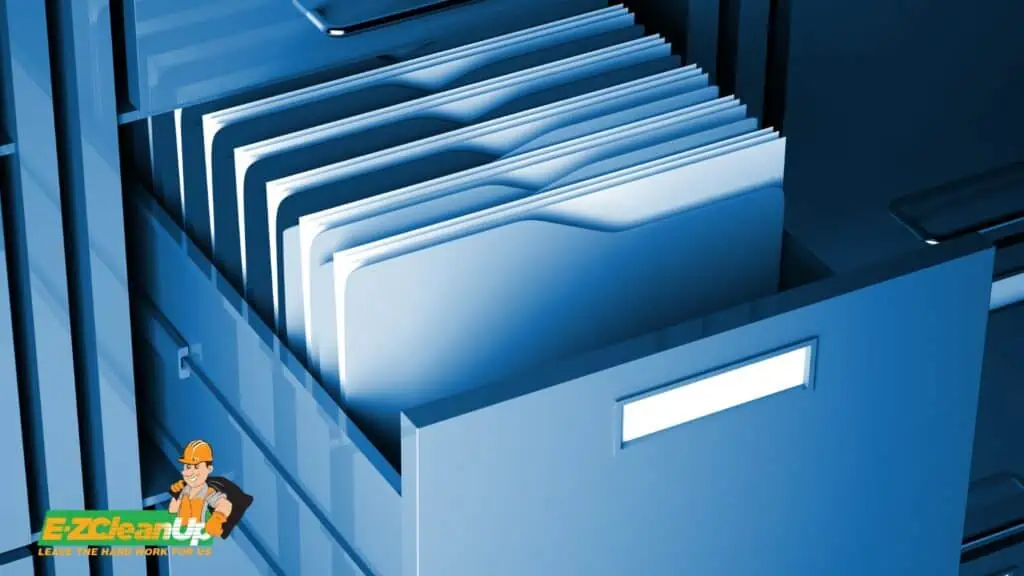
Choosing Durable Folders: A Buyer’s Guide for Longevity
When buying folders, durability should be a top priority. Look for folders made from high-quality materials – acid-free and lignin-free paper for paper folders and sturdy, flexible plastic for plastic folders. Pay attention to the construction of the folder, such as reinforced tabs and strong seams or bindings.
Consider the specific needs of your documents; for instance, if you’re storing photographs or delicate papers, opt for folders with appropriate protective features like archival-quality paper or sleeves.
Remember that investing in higher-quality folders can save money in the long run by reducing the need for replacements due to wear and tear.
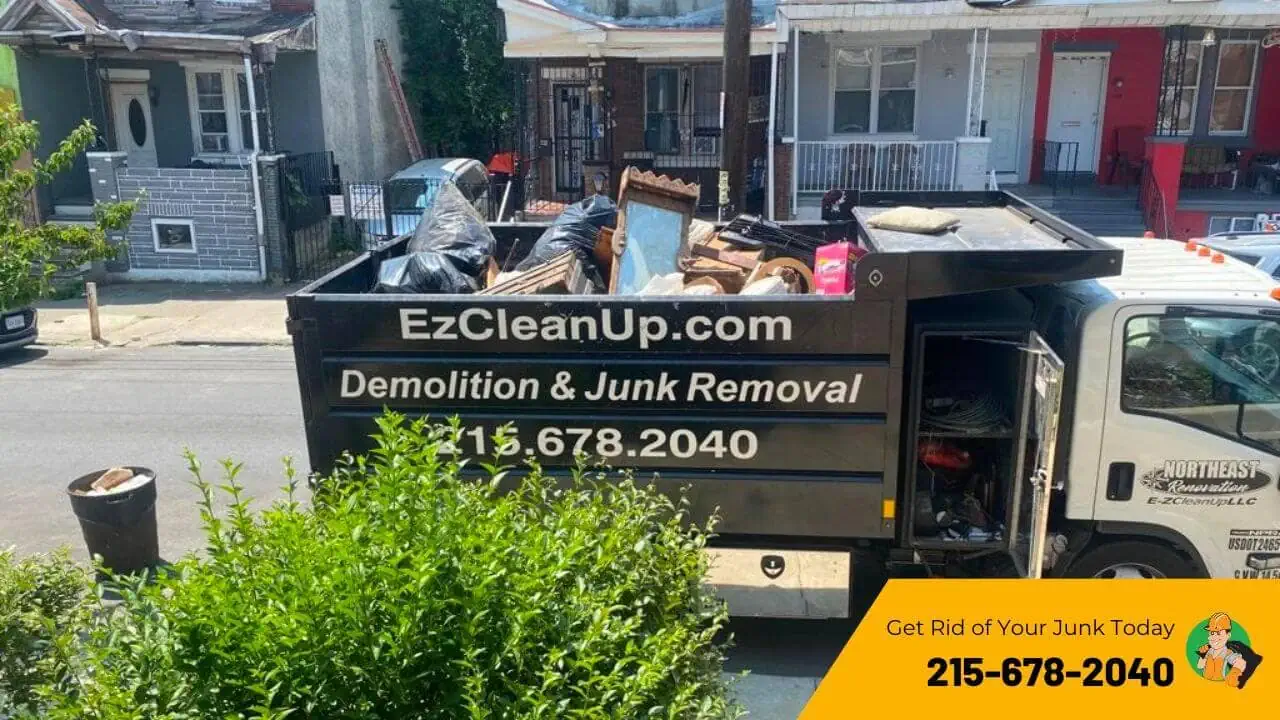
Choose Sustainable Folder Disposal
By choosing to repurpose, donate, or recycle, you’re actively reducing waste. It’s a simple yet powerful choice for sustainability.
Looking to clear out more than just folders? EZ CleanUp has got you covered. We offer commercial junk removal services for offices and businesses of all sizes. Let us help you keep your space clean and green! Call us to learn more about our services.

